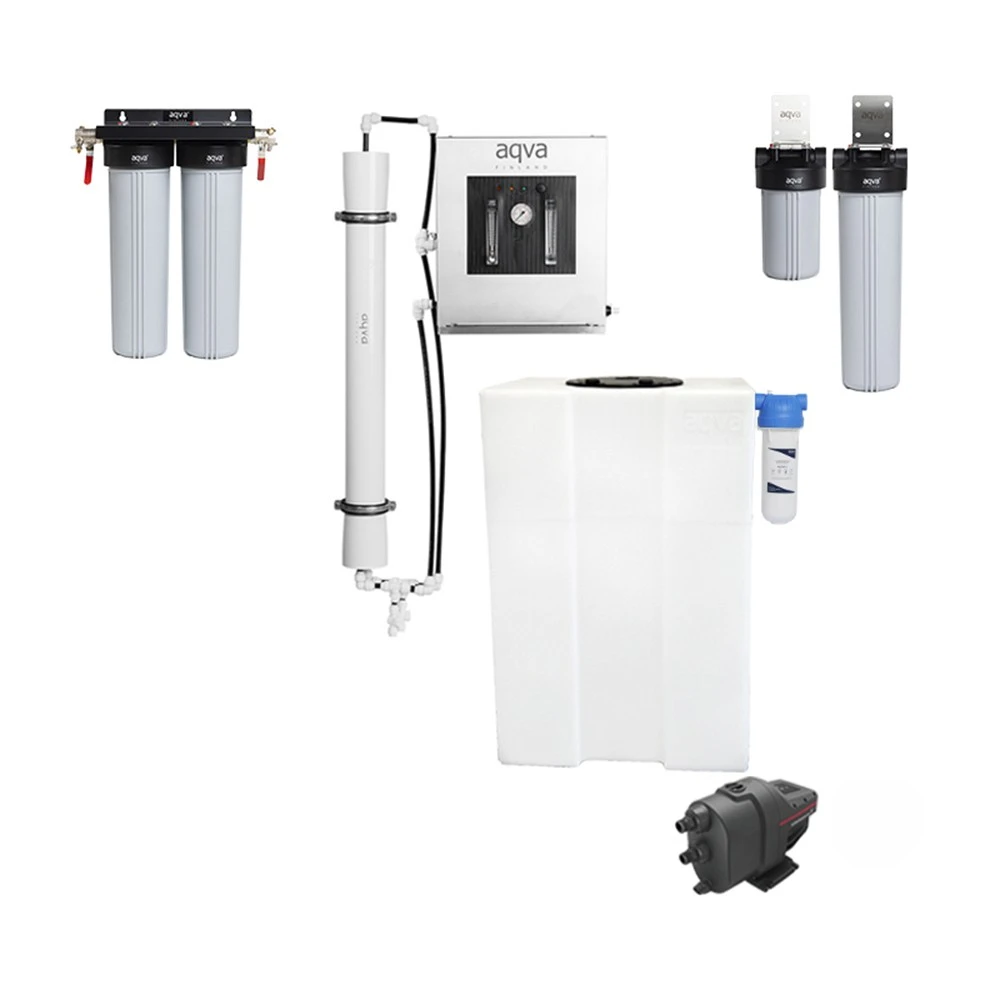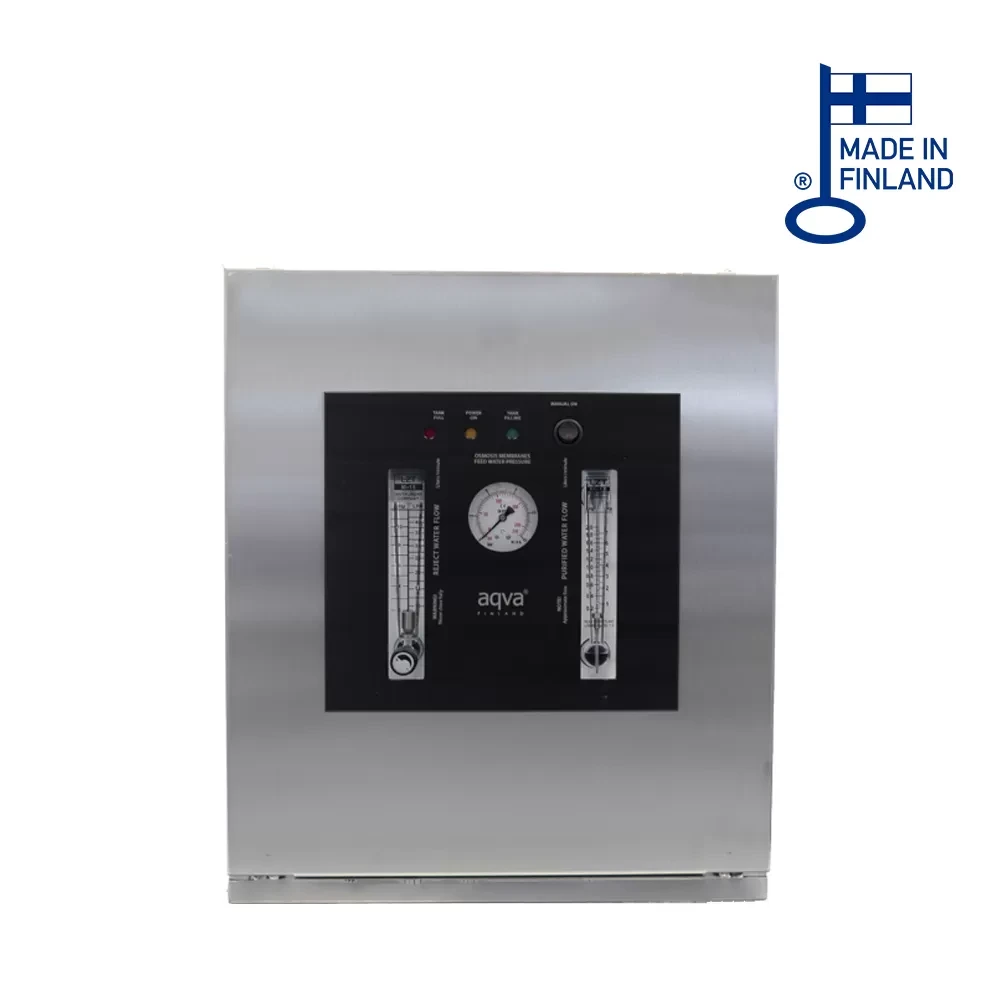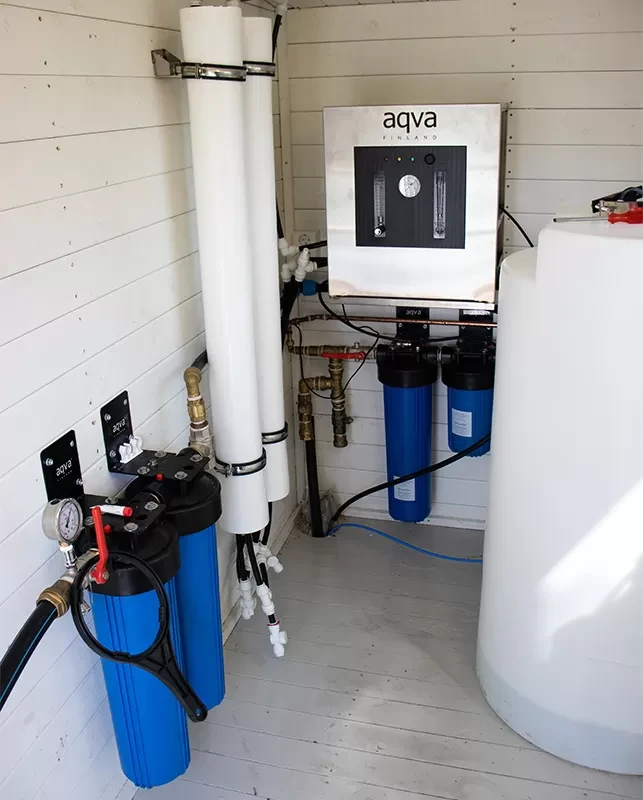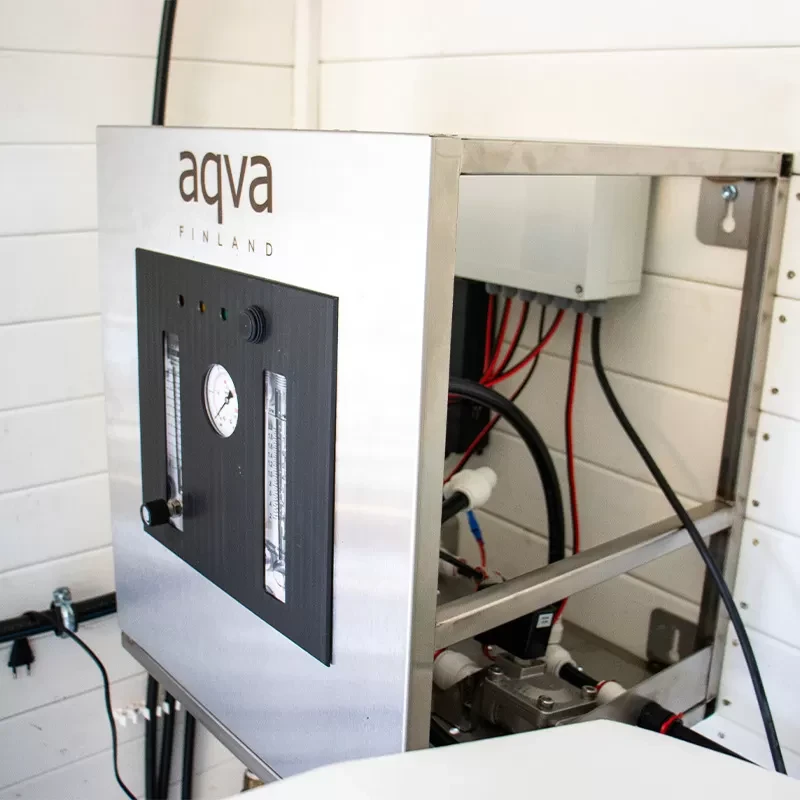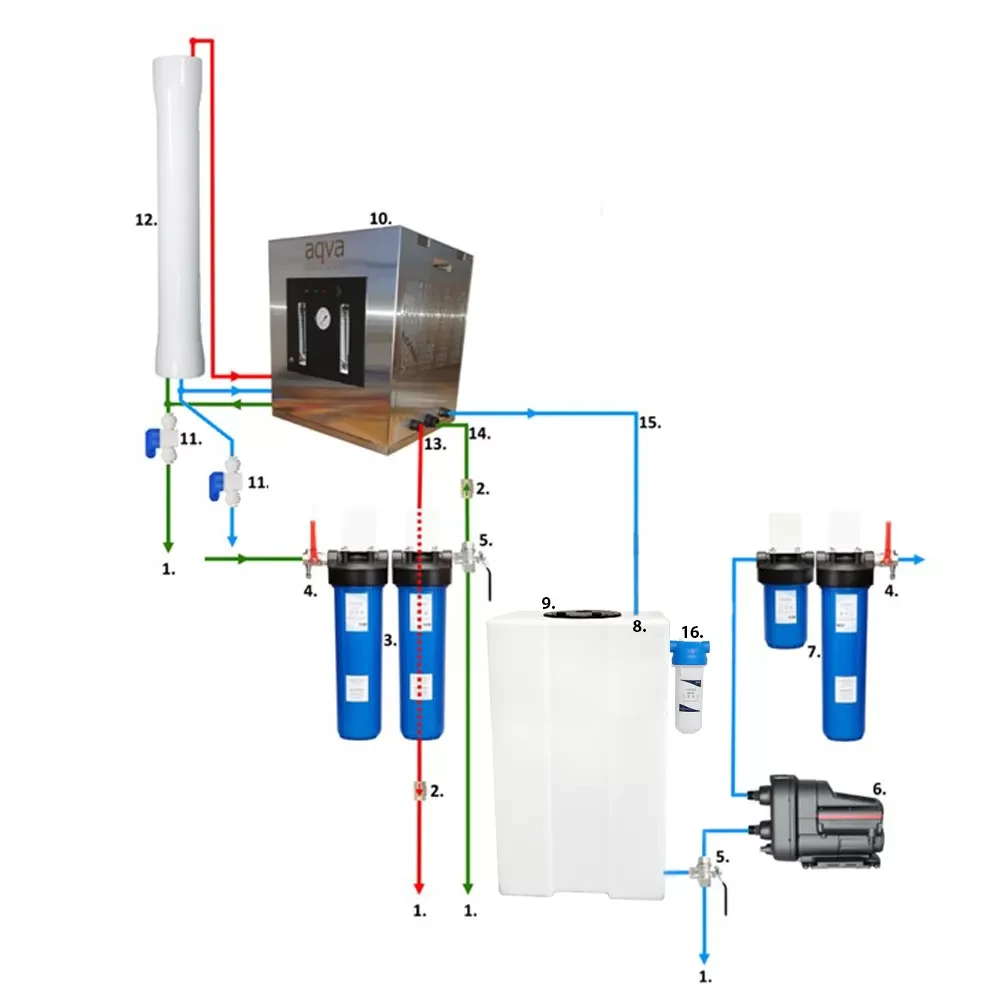AQVA AHTI M reverse osmosis system for point of entry purification
Tilaa saapumisilmoitus sähköpostiisi, niin saat heti tiedon kun tuotetta on jälleen saatavilla.
AQVA AHTI M Reverse Osmosis System for Drinking Water Purification
The AQVA AHTI M reverse osmosis system is the most effective solution for purifying well or lake water into potable drinking water, producing up to 150 liters of clean water per hour.
Benefits:
Produces crystal-clear, high-quality drinking water
Scalable water production, with the option to double output by adding a second reverse osmosis membrane
Removes up to 99% of impurities
Easy to use and maintain, ideal for seasonal cottage use
Meets the water consumption needs of an average Finnish household
Stores purified water in a 185-liter tank, serving as a buffer during peak usage
Filters challenging contaminants, including fluoride, uranium, blue-green algae, chloride, and arsenic
Multi-stage pre- and post-filtration for optimal water quality
Filters typically require replacement only once a year
Purification Methods:
XL-sized activated carbon filter: Removes solids, organic compounds, metals, industrial chemicals, and gaseous impurities like hydrogen sulfide and radon.
XL-sized polyphosphate filter: Protects the system and extends membrane lifespan by converting impurities like limescale and organic matter into a form that prevents buildup.
Large reverse osmosis membrane: The core of the system, it filters impurities with high efficiency, allowing only pure water to pass through while flushing contaminants to the drain.
Post-filter: Ensures hygienic water quality with a combination of fibrous activated carbon and 0.1 µm ultrafiltration, enhancing removal of gaseous impurities.
Remineralization filter: Adds calcium to the water, raising pH for a fresher, more natural taste.
Filters:
Solid particles
Turbidity and color
Limescale
Metals (e.g., iron, manganese)
Heavy metals (e.g., lead, mercury, cadmium, arsenic*)
Salts (e.g., chloride**, sodium**, sulfates, nitrates, nitrites)
Organic compounds (e.g., pesticides, pharmaceutical residues, hormones)
Microbiological contaminants (e.g., bacteria, viruses, molds)
Chlorine and chlorinated compounds
Uranium
Gaseous impurities (e.g., radon***, hydrogen sulfide) *Arsenic is typically removed with over 85% efficiency, though performance may vary in some cases.
**Salts (sodium and chloride) are removed at approximately 85% in freshwater systems.
***If radon is present, the activated carbon filter may act as a radiation source; see the installation manual for details.
Replacement Filters:
Annually:
Every Two Years (or as needed if clogged or production slows):
Package Contents:
Dual XL-sized filter housing for pre-filters
Pre-filters: AQCB-XL (activated carbon) and AQPF-XL (polyphosphate)
AQVA AHTI reverse osmosis unit
Reverse osmosis membrane: AQ062
185-liter purified water tank: AQ-TAN-185
Tank breather filter: AQ1MC-MF1
Near-silent distribution pump: Scala1
Post-filter: AQUF01-L
Remineralization filter: AQ1XL-PH
Hoses and connectors for linking pre-filters and water tank to the reverse osmosis unit
Technical Specifications:
Pre-filter feed water connection: 1" female thread
Purified water tank outlet: 3/4" female three-way valve
Distribution pump inlet/outlet: 1" male thread
Remineralization filter to distribution: 1" female thread
Space requirements: Approximately 200 x 150 cm; largest component (water tank) measures H91 x W61 x D40 cm
Components can be placed flexibly, not requiring a single location
Install in a space where potential leaks or drips will not cause damage
Flush water production: Typically 2–3 liters per 1 liter of purified water, adjustable via the flush water meter
Water production: Up to 150 liters per hour (varies with water quality and pressure)
See the "Files" tab for detailed installation and operation manuals
System Requirements:
Consistent feed pressure: 2–10 bar (below 3 bar may slow water production; higher pressure increases output)
Recommended feed water temperature: 4–30°C (lower temperatures slow production but improve purification; warmer water has the opposite effect)
Recommended feed water TDS: Below 1500 mg/L (higher TDS reduces production speed)
Refer to the installation and operation manuals in the "Downloads" tab for additional details
Winter Storage:
The system must not freeze with water inside. For use in unheated locations, follow the winter storage procedures outlined in the installation and operation manual. When restarting in spring, perform an extended flush as per the manual, after which the water is ready for normal use.
Tilaa uutiskirje

